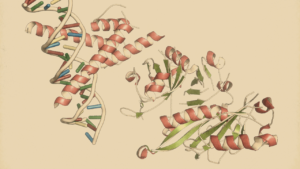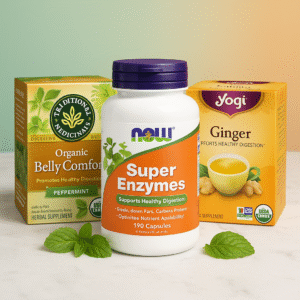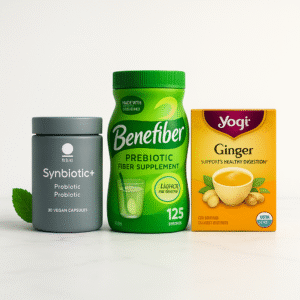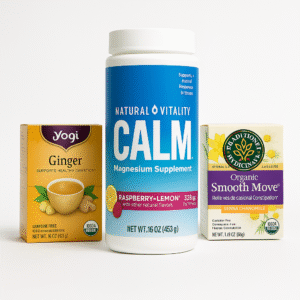The 10 Best Plant-Based Protein Supplements
Looking for high-quality or best plant-based protein supplements? Check out our top 10 recommendations and fuel your fitness journey.
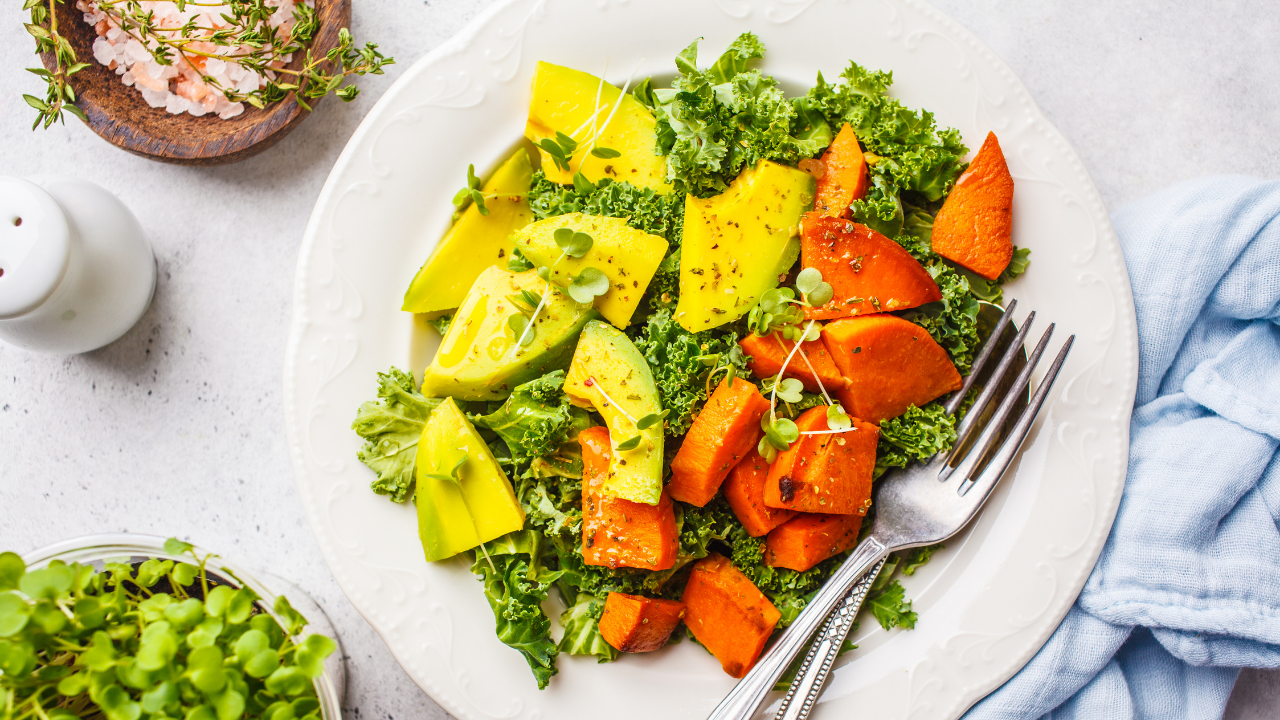
Looking for high-quality or best plant-based protein supplements? Check out our top 10 recommendations and fuel your fitness journey with the best.
Whether you're a vegan, vegetarian, or simply someone who wants to explore the benefits of plant-based proteins, these supplements will provide you with a convenient and nutritious solution.
Best Plant-Based Protein Supplements
Introduction
Protein is an essential macronutrient that plays a crucial role in various bodily functions✅.
It is responsible for building and repairing tissues, supporting muscle growth, and aiding in the production of enzymes and hormones✅✅✅.
While animal-based protein sources have long been popular, there has been a significant rise in the demand for plant-based alternatives✅.
In recent years, there has been a growing trend toward plant-based diets. It is estimated that around 11% of Americans now identify as vegan or vegetarian, with a significant number of others actively seeking to reduce their meat intake ✅.
Plant-based protein supplements offer a range of benefits, including being rich in fiber, low in saturated fats, and environmentally sustainable✅✅.
Plant-based foods often incorporate plant proteins due to their versatile functional properties. These proteins have the ability to thicken, gel, emulsify, foam, and hold fluids, making them an ideal ingredient in many food products✅✅.
Proteins are a vital source of essential amino acids, and they can be obtained from various botanical sources such as soybeans, peas, faba beans, mung beans, lentils, algae, and microalgae. Each of these sources has its own unique characteristics✅✅✅.
Plant-based proteins usually have globular structures and can be found in complex multimers made up of various types of proteins held together by physical and/or chemical bonds ✅✅.
Proteins are fascinating molecules whose biological origin is a key factor in determining their functionality. However, even after isolation and purification, changes in their association and native states can have a significant impact on their functionality✅✅✅.
The plant-based food industry faces a significant obstacle due to the shortage of plant proteins that possess consistent functional properties✅.
Further research is necessary to determine suitable botanical sources and isolation techniques that can be used to produce dependable functional ingredients in the future.
Plant-based products have gained popularity in recent years, but a major challenge is to replicate the structural arrangements of animal proteins in plant-based proteins. This is crucial to achieve similar physicochemical characteristics and make plant-based products more comparable to their animal-based counterparts✅✅.
The 10 Best Plant-Based Protein Supplements Everyday
Plant-based protein powders are commonly made from pea or soy protein. Other plant-based protein powder compositions may include a combination of pea, soy, pumpkin seed, watermelon, brown rice, quinoa, sunflower seed, lentil, hemp seed, and/or flax seed proteins✅.
1. Organic Pea Protein Powder
Pea protein powder is derived from yellow peas and is a highly digestible and allergen-free option✅. It is rich in essential amino acids, particularly lysine, which is often limited in plant-based diets.
Yellow peas are a rich source of lysine, with a concentration of approximately 1.69% of dry matter✅.
Organic pea protein powder is a versatile supplement that can be easily incorporated into smoothies, baked goods, or simply mixed with water for a quick protein boost.
KOS Vegan Protein Powder
Best Features:
- USDA Organic
- Climate Pledge Friendly
- GMP Certified
- Gold Medal for Consumer Choice-Weight Loss, 2020
- Best Tasting, 2020
- Best All-Around Flavor, 2020
Why buy it
- 5 Protein Blend
- 12 Vitamins & Minerals
- 20g Protein
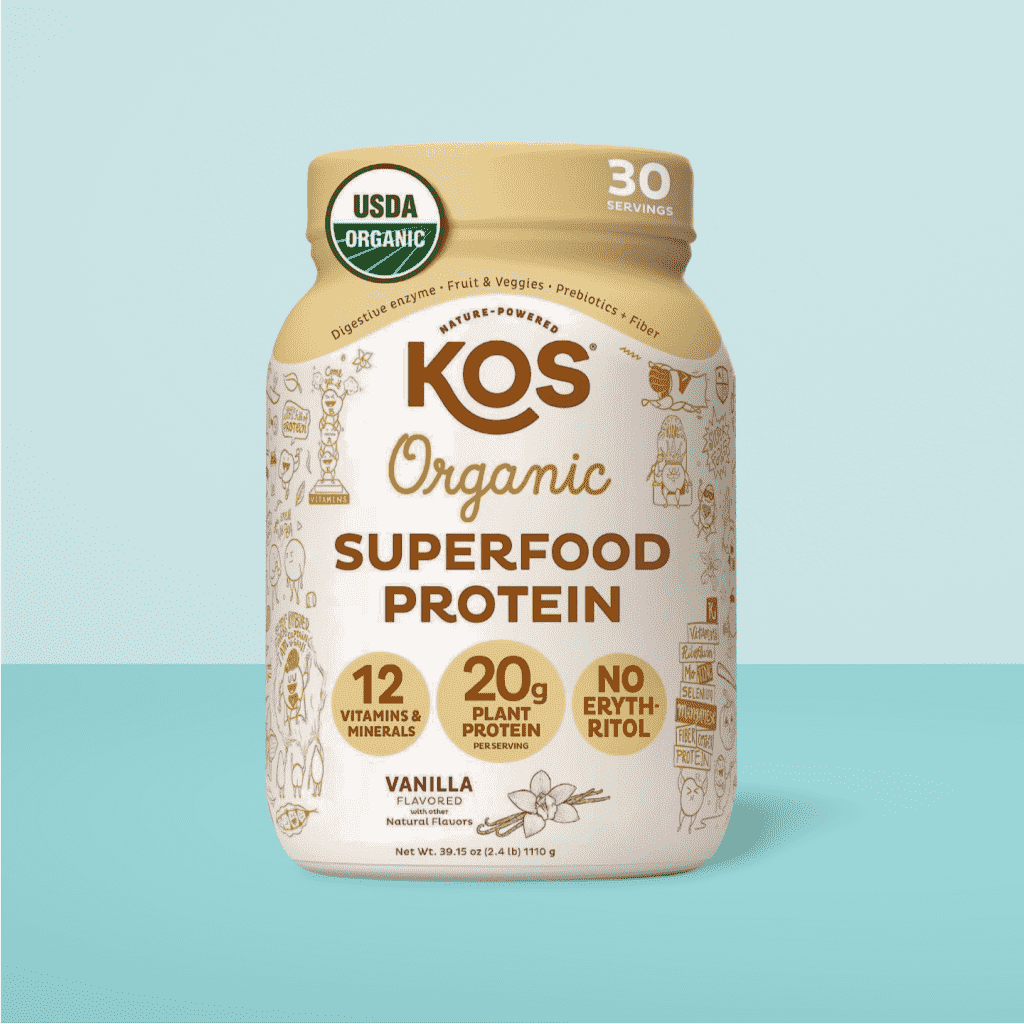
2. Brown Rice Protein Powder
Brown rice protein powder is another excellent plant-based protein source. It is hypoallergenic and easily digestible, making it suitable for individuals with dietary restrictions or sensitive stomachs✅✅.
This protein powder is often fortified with additional nutrients and is an ideal choice for those looking for a gluten-free and dairy-free option.
Sunwarriorr Brown Rice Protein Powder
Best Features:
- USDA Organic
- Climate Pledge Friendly
- CCOF Certified
- GMP Certified
- 100% Post Consumer Recycled Material
Why buy it
- 1 Ingredient Ultra Clean
- Sprouted and Fermented
- 20g Protein Muscle
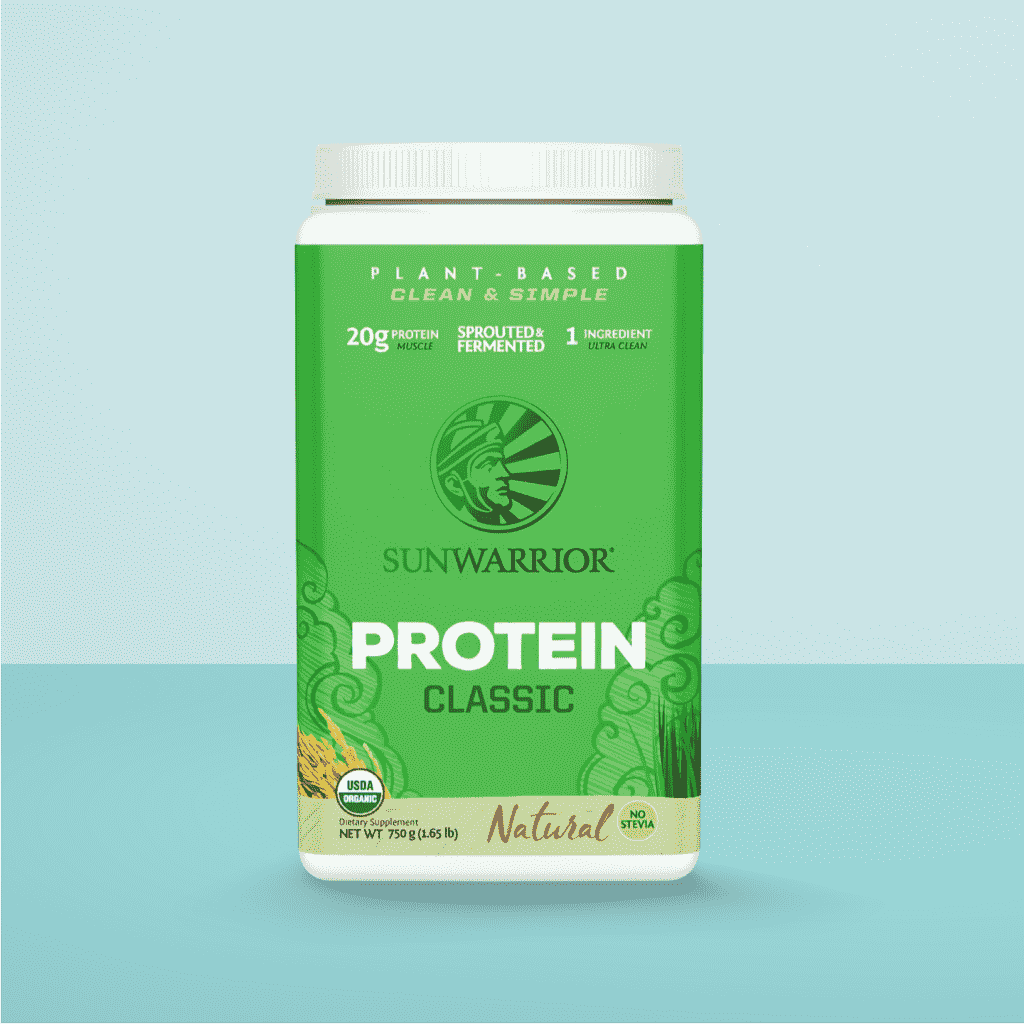
3. Hemp Protein Powder
Hemp protein powder is derived from the seeds of the hemp plant and is gaining popularity due to its high protein content and omega-3 fatty acids. It is a complete protein, meaning it contains all the essential amino acids required by the body✅✅.
Additionally, hemp protein powder is rich in fiber, minerals, and antioxidants, making it a highly nutritious choice ✅.
Earth Circle Organics Hemp Powder
Best Features:
- USDA Organic
- Climate Pledge Friendly
- Lab tested
- National Celiac Assos Certified
- Satisfaction Guarantee
Why buy it
- Highest Quality, Potent Ingredients
- Proven Supplement
- 19g Hemp Protein
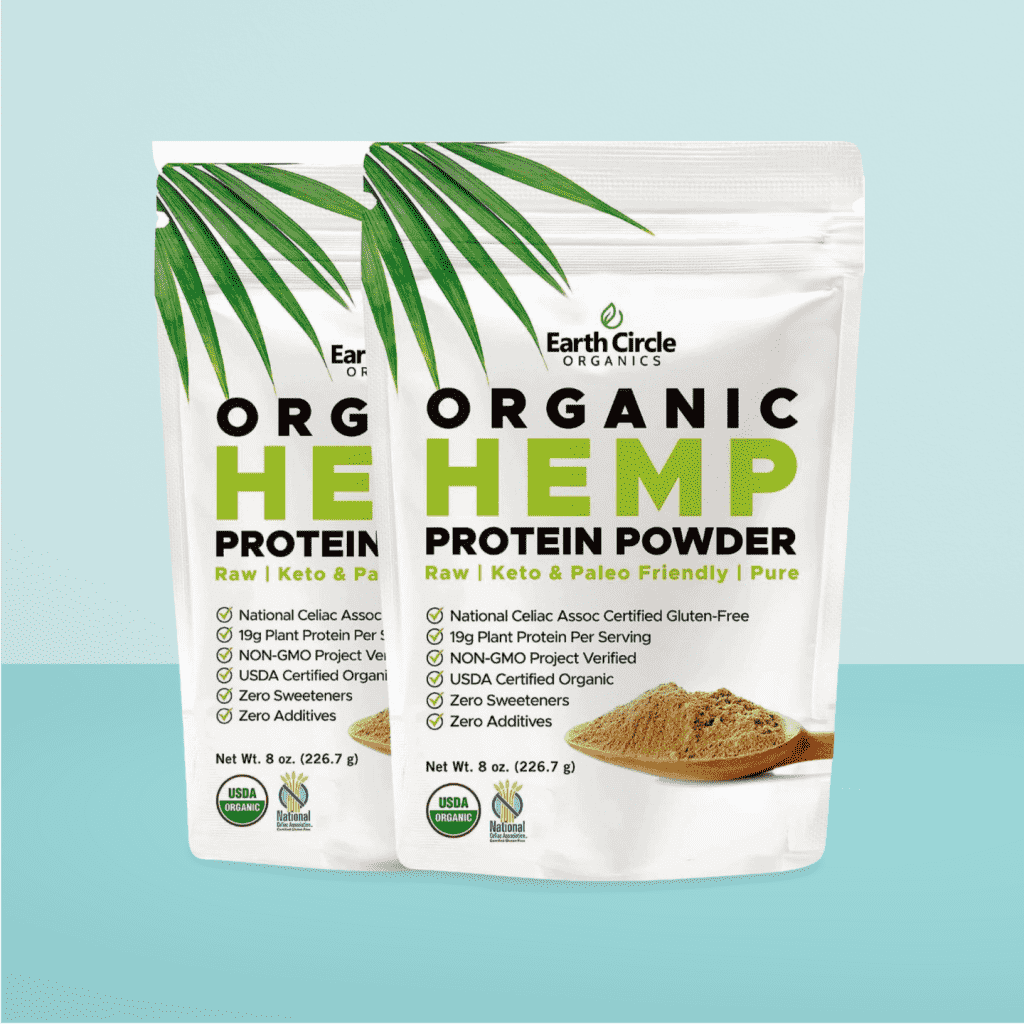
4. Organic Soy Protein Isolate
Soy protein isolate is a concentrated form of soy protein that has been stripped of most of its carbohydrates and fats. It is an excellent option for individuals looking for a high-protein, low-calorie supplement✅✅.
Organic soy protein isolate is often fortified with vitamins and minerals and is known to promote muscle growth and aid in post-workout recovery ✅.
Natural Nutra Organic Plant-Based Soy Protein Powder
Best Features:
- USDA Organic
- Climate Pledge Friendly
- QAI Certified
- NPA Diamond Awarded
- GMP Certified
- FDA & DEA Inspected Manufacturing Facility
Why buy it
- Support Bone, Cardiovascular Health
- BPA Free, Recycled Glass Bottles
- Premium Ingredients
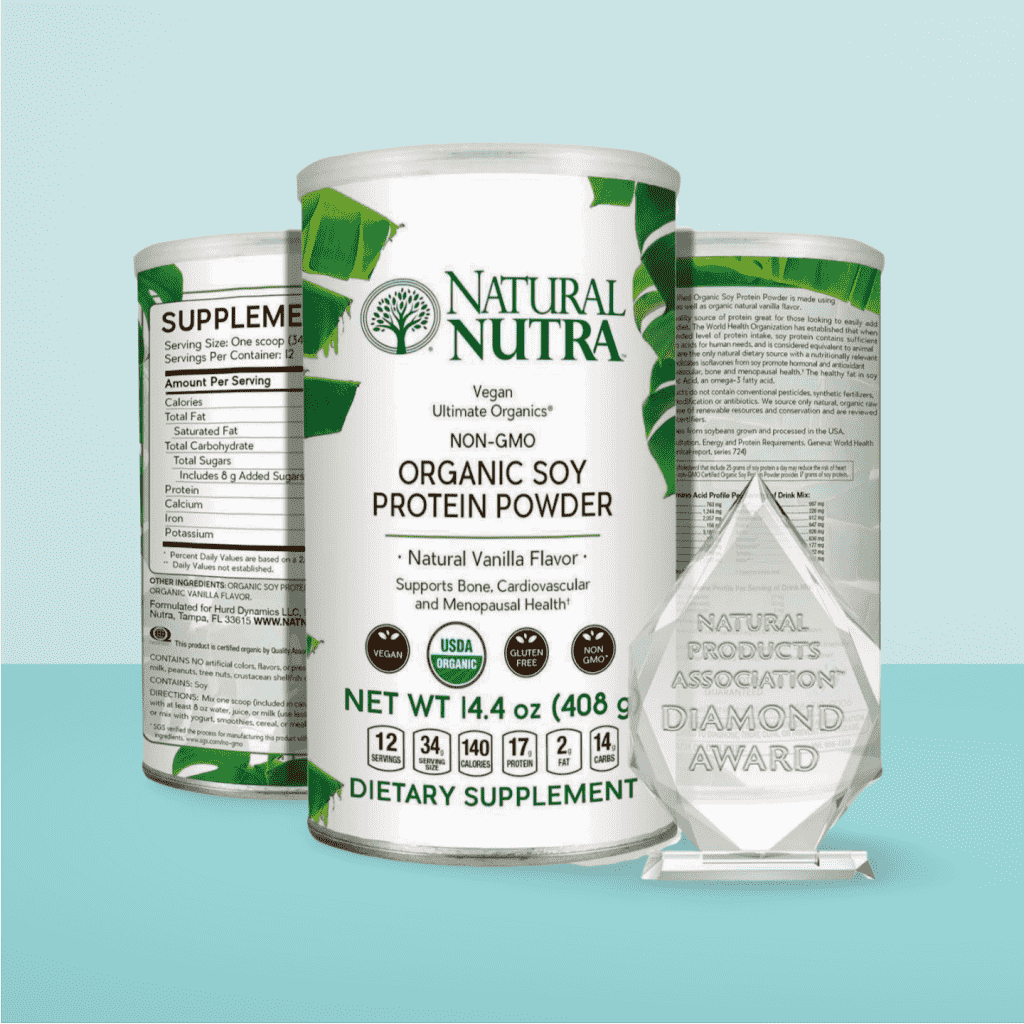
5. Pumpkin Seed Protein Powder
Pumpkin seed protein powder is derived from roasted pumpkin seeds and is a rich source of protein, fiber, and essential fatty acids. It contains a good balance of all nine essential amino acids, making it a valuable addition to any plant-based diet✅✅.
This protein powder has a mild nutty flavor and can be easily incorporated into smoothies, energy bars, or sprinkled on top of yogurt and salads.
Sprout Living Pumpkin Seed Protein Powder
Best Features:
- USDA Organic
- Climate Pledge Friendly
- Vegan Certified
- Third-Party Tested
- WHOLE30 Approved
Why buy it
- 1g Net Carbs
- Omega-3 EFAs
- 20g Pumpkin Protein
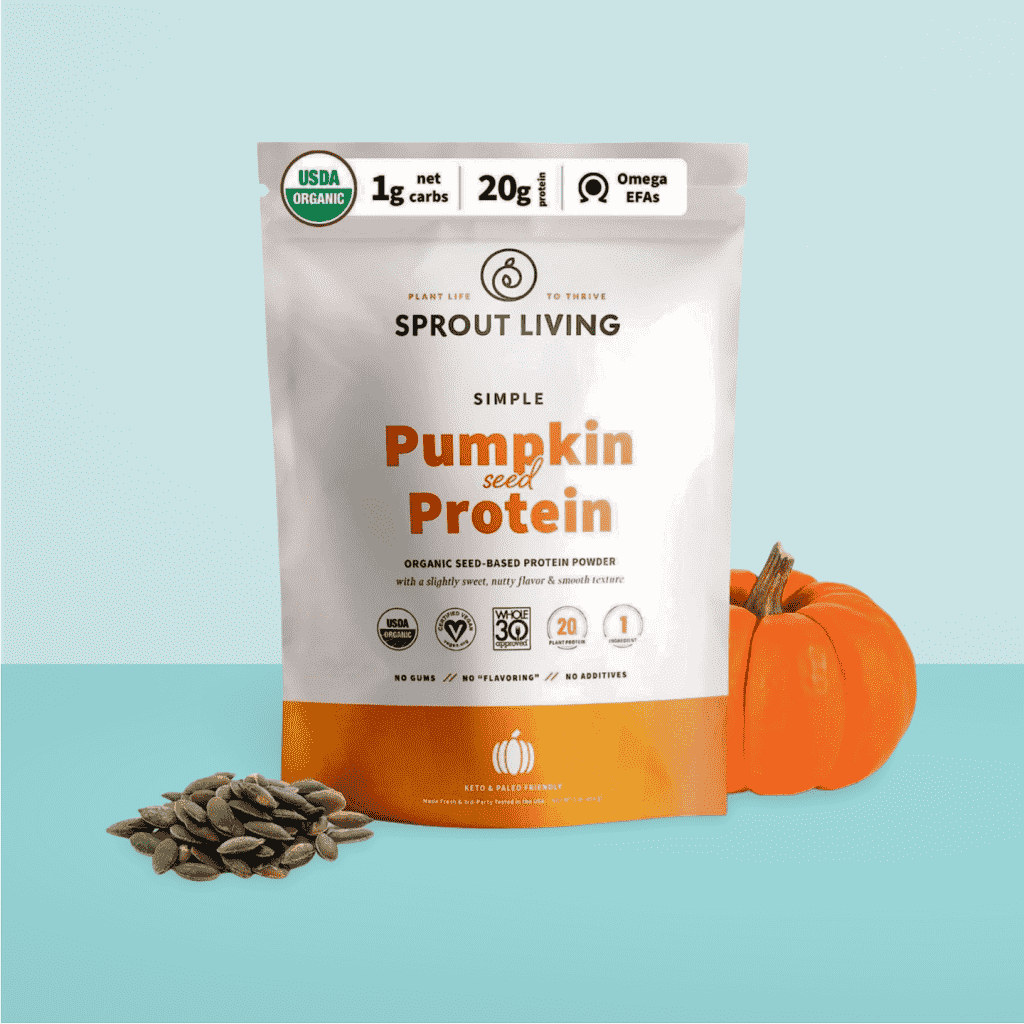
6. Chia Seed Protein Powder
Chia seed protein powder is derived from nutrient-dense chia seeds and is a great option for individuals looking for a plant-based protein source. It is rich in fiber, omega-3 fatty acids, and antioxidants✅.
Chia seed protein powder has a neutral taste and can be added to various recipes, including protein shakes, pancakes, and baked goods.
Foods Alive Chia Protein Powder
Best Features:
- USDA Organic
- Climate Pledge Friendly
- Vegan Certified
- Kosher, Keto Diet
Why buy it
- Highest Protein, High Fiber
- Affordable Protein Supplement
- 35% Protein per Serving
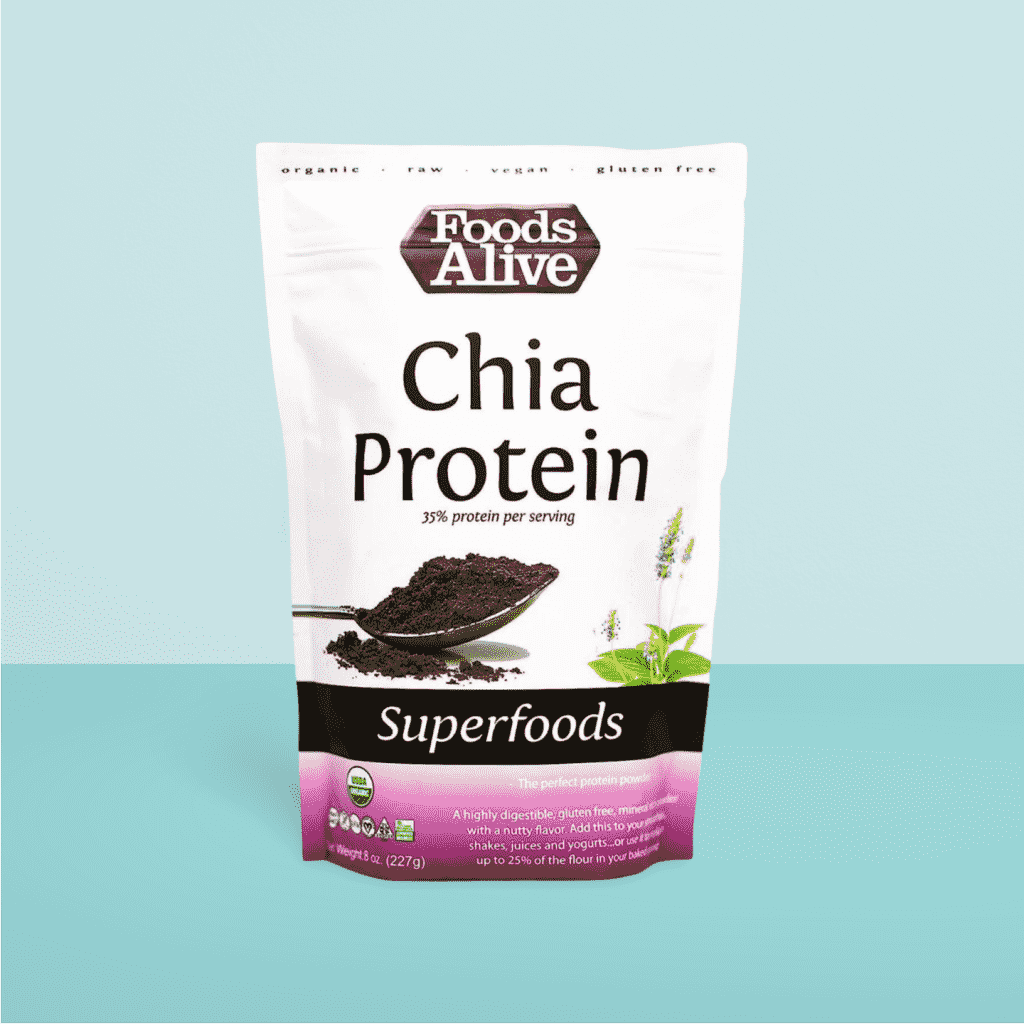
7. Almond Protein Powder
Almond protein powder is made from finely ground almonds and is an excellent source of plant-based protein, healthy fats, and vitamin E✅✅. It is low in carbohydrates and high in fiber, making it a great choice for individuals following a low-carb or ketogenic diet.
Almond protein powder adds a subtle nutty flavor to your recipes and can be used in smoothies, baking, or as a topping for oatmeal or yogurt.
NOOSH Plant-Based Almond Protein Powder
Best Features:
- USDA Organic
- Climate Pledge Friendly
- WBENC Certified
- Non-GMO Verified
- Compact By Design
Why buy it
- Made with Whole California Almond
- Women-Owned Company
- 20g Almond Protein
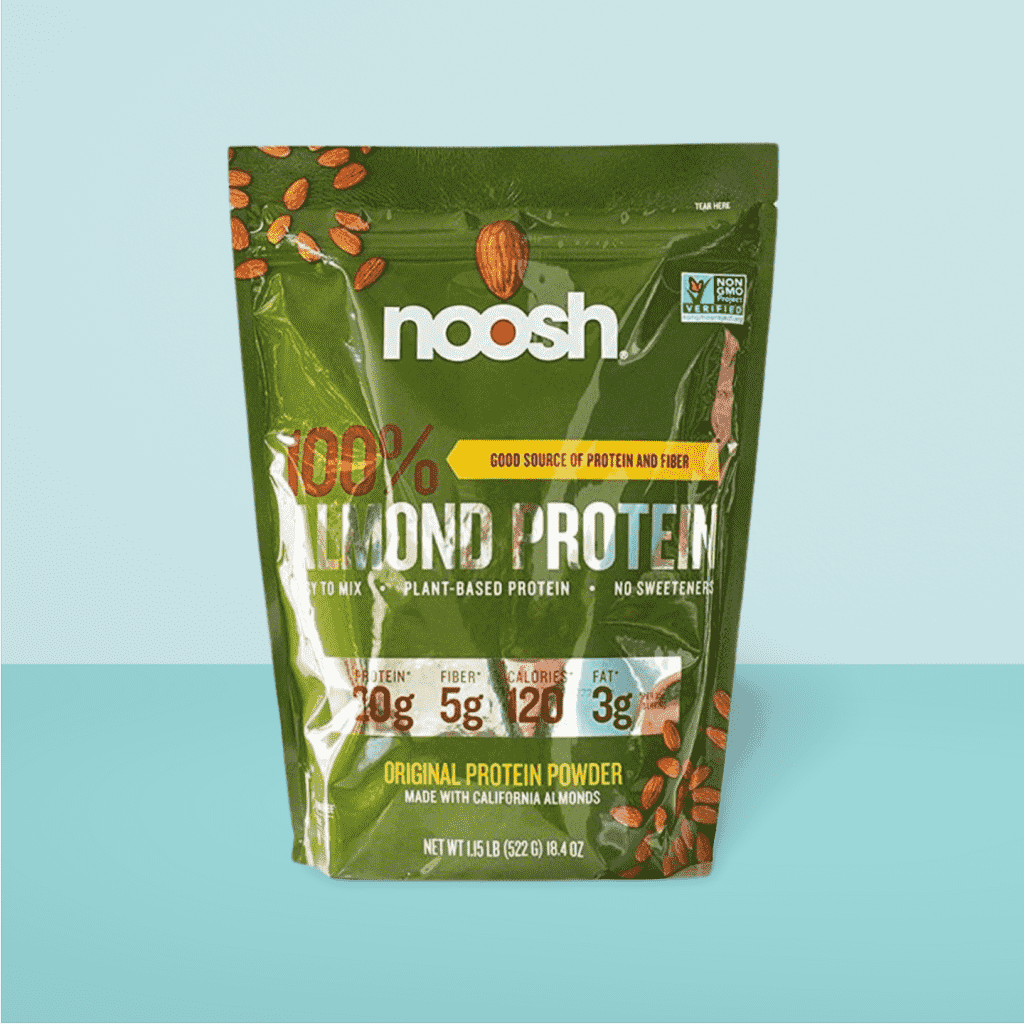
8. Sacha Inchi Protein Powder
Sacha Inchi protein powder is derived from the seeds of the sacha inchi plant, native to the Amazon rainforest ✅. It is a complete protein, containing all essential amino acids ✅, and is rich in omega-3 fatty acids✅.
This protein powder also provides a good amount of fiber and antioxidants. Sacha Inchi protein powder has a mild, nutty taste and can be added to smoothies or used in protein bars and energy balls.
Starseed Paleo-friendly Sacha Inchi Protein Powder
Best Features:
- FAIR TRADE Certified
- USDA Organic
- Climate Pledge Friendly
- Non-GMO Verified
Why buy it
- Whole Food Protein
- Paleo Friendly
- 18g Protein and 1,3g Omega-3
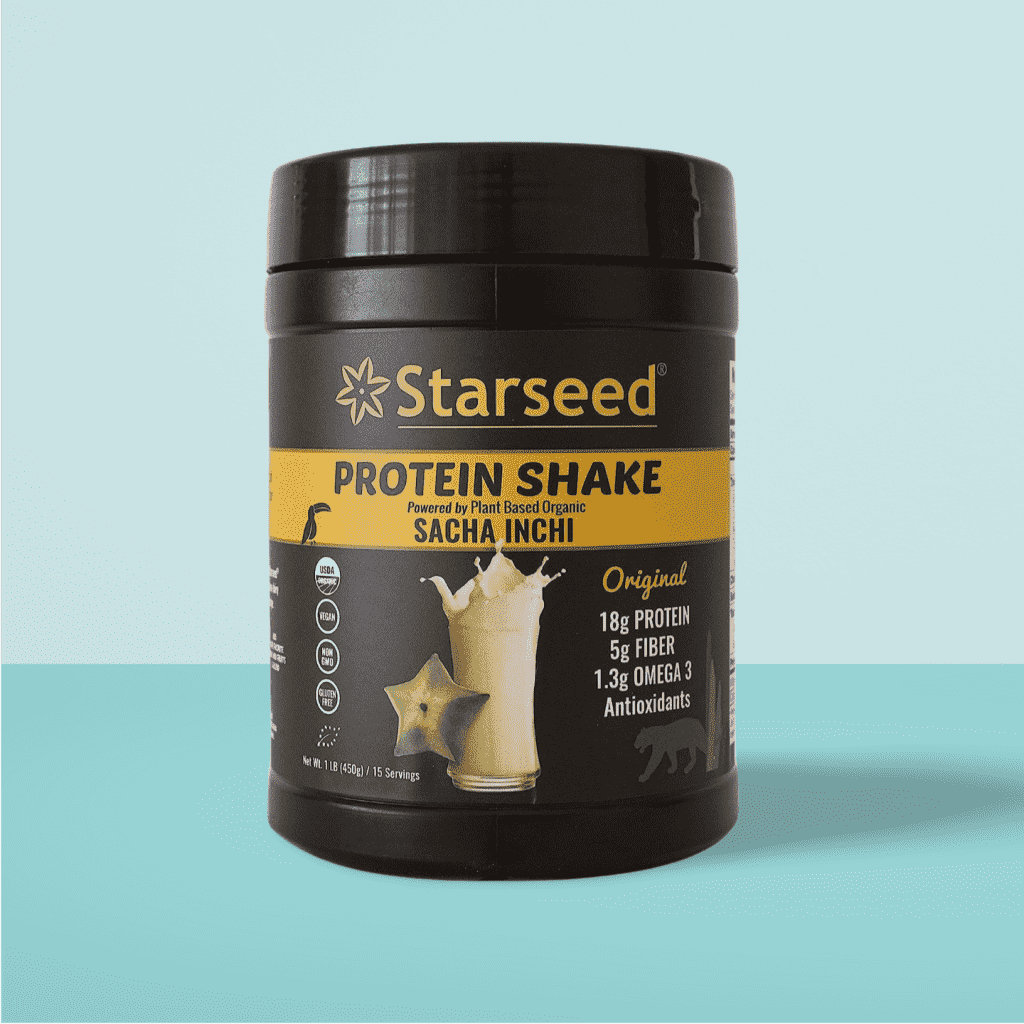
9. Quinoa Protein Powder
Quinoa protein powder is made from the nutrient-dense quinoa grain, which is known for its high protein content. It is a complete protein, containing all essential amino acids, and is also gluten-free✅✅.
It is also rich in lysine, threonine, and methionine, which are amino acids not found in other cereals ✅.
Quinoa protein powder is versatile and can be used in a variety of recipes, such as protein shakes, pancakes, and homemade protein bars.
BetterBody Foods Organic Pea & Quinoa Protein Powder
Best Features:
- USDA Organic
- Climate Pledge Friendly
- Non-GMO Verified
- 10% DV of Iron
Why buy it
- Affordable Quality Supplement
- Community of Hope +
- 16g Protein
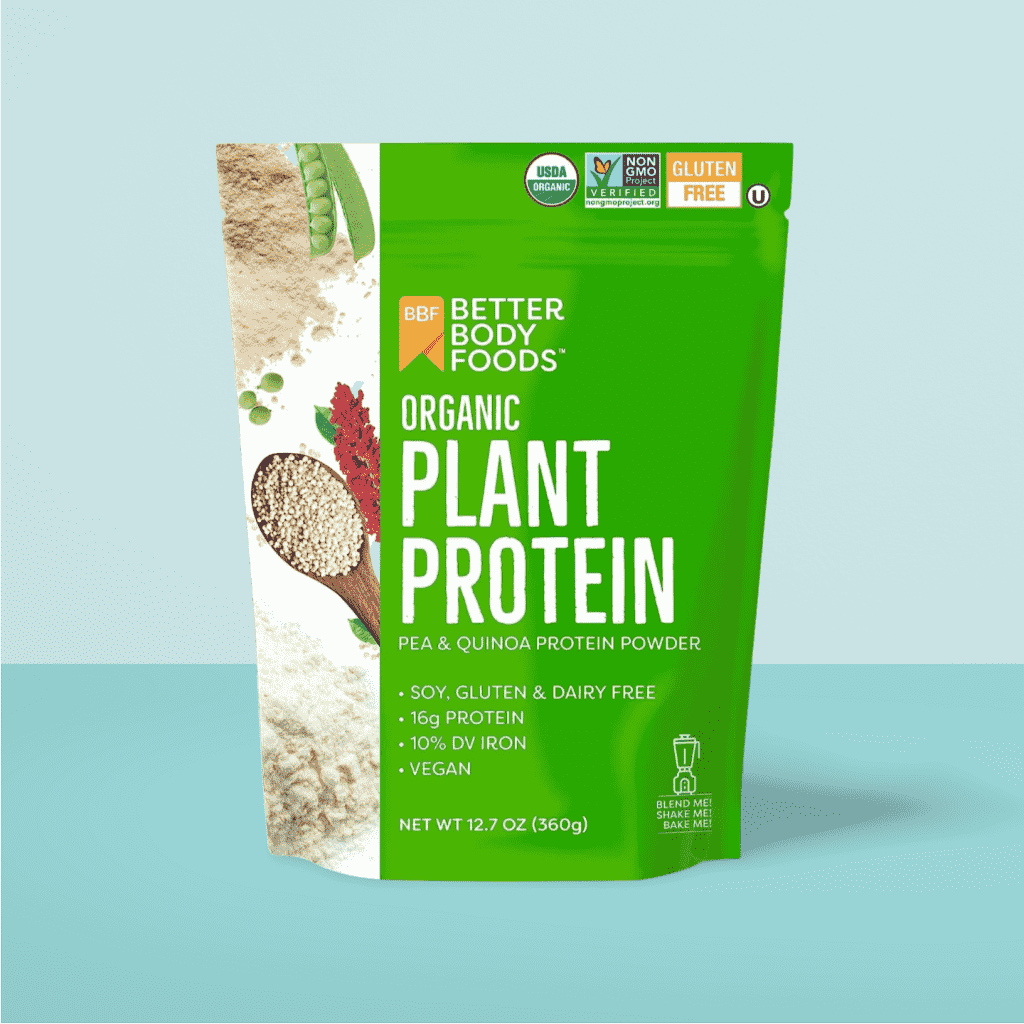
10. Mixed Plant-Based Protein Blends
Mixed plant-based protein blends offer a convenient way to incorporate a variety of plant-based proteins into your diet. These blends typically combine different protein sources like peas, rice, hemp, and chia seeds to provide a well-rounded amino acid profile✅✅.
They often come in flavored options like chocolate or vanilla, making them a tasty choice for protein shakes or smoothies.
PlantFusion Complete Lean Plant-Based Protein Powder
Best Features:
- Vegan Certified
- USDA Organic
- Climate Pledge Friendly
- Non-GMO Verified
- Kosher Certification
Why buy it
- 9g Prebiotic Fiber
- 1 Billion CFU Probiotics
- 2.4g Superfoods
- 21g Weight Loss Protein
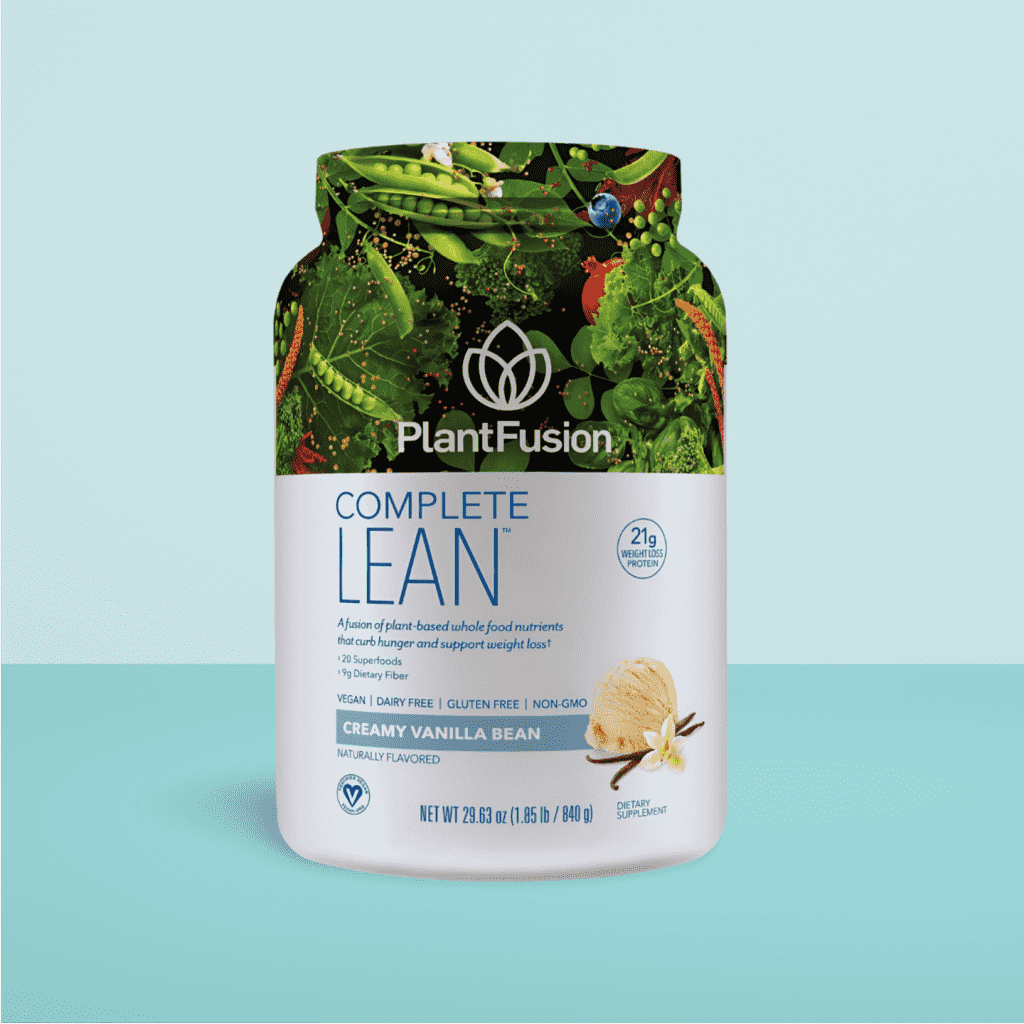
The 10 Best Plant-Based Protein Supplements Everyday - FAQs
What are the benefits of plant-based protein supplements?
Can plant-based protein supplements help with weight loss?
Are plant-based protein supplements suitable for athletes?
Can I use plant-based protein supplements if I have dietary restrictions or allergies?
How should I incorporate plant-based protein supplements into my diet?
Are plant-based protein supplements suitable for vegans and vegetarians?
References
Fitnature uses only high-quality sources, including peer-reviewed studies, to support the facts within our articles. Read our editorial process to learn more about how we fact-check and keep our content accurate, reliable, and trustworthy.
- Ahmed, Ishtiaq, et al. “Socio-Economic and Environmental Impacts of Biomass Valorisation: A Strategic Drive for Sustainable Bioeconomy.” Sustainability, vol. 13, no. 8, Apr. 2021, https://doi.org/10.3390/su13084200.
- Ain, Qura Tul, et al. “Adaptive Mechanisms in Quinoa for Coping in Stressful Environments: An Update.” PeerJ, vol. 11, Mar. 2023, https://doi.org/10.7717/peerj.14832.
- Aluko. “Determination of Nutritional and Bioactive Properties of Peptides in Enzymatic Pea, Chickpea, and Mung Bean Protein Hydrolysates.” Journal of AOAC INTERNATIONAL, vol. 91, no. 4, Nov. 2019, pp. 947–56, https://doi.org/10.1093/jaoac/91.4.947.
- “Are Plant-Based Meat Alternative Products Healthier Than… : Nutrition Today.” LWW, https://journals.lww.com/nutritiontodayonline/Abstract/2022/07000/Are_Plant_Based_Meat_Alternative_Products.4.aspx. Accessed 22 June 2023.
- Augustyńska-Prejsnar, Anna, et al. “Quality of Poultry Roast Enriched with Hemp Seeds, Hemp Oil, and Hemp Flour.” Foods, vol. 11, no. 23, Dec. 2022, https://doi.org/10.3390/foods11233907.
- Banu, Iuliana, and Iuliana Aprodu. “Investigations on Functional and Thermo-Mechanical Properties of Gluten Free Cereal and Pseudocereal Flours.” Foods, vol. 11, no. 13, June 2022, https://doi.org/10.3390/foods11131857.
- Chen, Weijun, et al. “Effect of Spray-Drying and Freeze-Drying on the Composition, Physical Properties, and Sensory Quality of Pea Processing Water (Liluva).” Foods, vol. 10, no. 6, June 2021, https://doi.org/10.3390/foods10061401.
- Coelho-Ravagnani, de Faria, et al. “Dietary Recommendations during the COVID-19 Pandemic.” Nutrition Reviews, vol. 79, no. 4, July 2020, pp. 382–93, https://doi.org/10.1093/nutrit/nuaa067.
- (Dejkriengkraikul), Pornngarm Limtrakul, et al. “Anthocyanins and Proanthocyanidins in Natural Pigmented Rice and Their Bioactivities.” IntechOpen, 12 June 2019, https://www.intechopen.com/chapters/67653. Accessed 22 June 2023.
- Emelike, N. J. T., et al. “Nutrient Composition and Sensory Properties of Wheat Bread Substituted with Defatted and Undefatted Cashew Kernel (Anacardium Occidentale Linn.) Flours .” European Journal of Nutrition & Food Safety, Dec. 2020, pp. 28–39, https://doi.org/10.9734/ejnfs/2020/v12i1230332.
- Esmaielbeiki, et al. “Progress and Challenges in Predicting Protein Interfaces.” Briefings in Bioinformatics, vol. 17, no. 1, May 2015, pp. 117–31, https://doi.org/10.1093/bib/bbv027.
- Franco, Wendy, et al. “Quinoa Flour, the Germinated Grain Flour, and Sourdough as Alternative Sources for Gluten-Free Bread Formulation: Impact on Chemical, Textural and Sensorial Characteristics.” Fermentation, vol. 7, no. 3, July 2021, https://doi.org/10.3390/fermentation7030115.
- Guedes, Marcella Rodrigues, and Márcia Regina Simas Torres Klein. “Cardiovascular Benefits of Plant-Based Diets – International Journal of Cardiovascular Sciences.” Int J Cardiovasc Sci, vol. 35, no. 1, Dec. 2021, pp. 11–13, https://doi.org/10.36660/ijcs.20210262.
- Guess, Nicola, et al. A Cross-Sectional Study of the Commercial Plant-Based Landscape across the US, UK and Canada. Cold Spring Harbor Laboratory, 11 Apr. 2022, http://dx.doi.org/10.1101/2022.04.08.487708. Accessed 22 June 2023.
- Guiotto, Estefanía Nancy, et al. “Development of Highly Nutritional Breads with By-Products of Chia (Salvia Hispanica L.) Seeds.” Foods, vol. 9, no. 6, June 2020, https://doi.org/10.3390/foods9060819.
- Harnack, Lisa J., et al. “Are Plant-Based Meat Alternative Products Healthier Than the Animal Meats They Mimic?” Nutrition Today, vol. 57, no. 4, July 2022, pp. 195–99, https://doi.org/10.1097/nt.0000000000000553.
- Hussain, Ashiq, Tusneem Kausar, Sawera Sehar, Ayesha Sarwar, Muhammad Yousaf Quddoos, et al. “A Review on Biochemical Constituents of Pumpkin and Their Role as Pharma Foods; a Key Strategy to Improve Health in Post COVID 19 Period.” Food Production, Processing and Nutrition, vol. 5, no. 1, Mar. 2023, pp. 1–14, https://doi.org/10.1186/s43014-023-00138-z.
- Hussain, Ashiq, Tusneem Kausar, Sawera Sehar, Ayesha Sarwar, Abdul Haseeb Ashraf, et al. “Utilization of Pumpkin, Pumpkin Powders, Extracts, Isolates, Purified Bioactives and Pumpkin Based Functional Food Products: A Key Strategy to Improve Health in Current Post COVID 19 Period: An Updated Review.” Applied Food Research, vol. 2, no. 2, Dec. 2022, p. 100241, https://doi.org/10.1016/j.afres.2022.100241.
- Jaskolowski, Mateusz, et al. Molecular Basis of the TRAP Complex Function in ER Protein Biogenesis. Cold Spring Harbor Laboratory, 4 Oct. 2022, http://dx.doi.org/10.1101/2022.10.04.510795. Accessed 22 June 2023.
- Jiménez-Munoz, Luis Miguel, et al. “Design Future Foods Using Plant Protein Blends for Best Nutritional and Technological Functionality.” Trends in Food Science & Technology, vol. 113, July 2021, pp. 139–50, https://doi.org/10.1016/j.tifs.2021.04.049.
- Khazaei, Hamid, and Albert Vandenberg. “Seed Mineral Composition and Protein Content of Faba Beans (Vicia Faba L.) with Contrasting Tannin Contents.” Agronomy, vol. 10, no. 4, Apr. 2020, https://doi.org/10.3390/agronomy10040511.
- Kittibunchakul, Suwapat, et al. “Evaluation of Sacha Inchi (Plukenetia Volubilis L.) By-Products as Valuable and Sustainable Sources of Health Benefits.” Horticulturae, vol. 8, no. 4, Apr. 2022, https://doi.org/10.3390/horticulturae8040344.
- Konstantina, Passiou E., et al. “Plant-Based Protein Food Products: Perceptions from the Greek Food Industry.” KnE Social Sciences, Feb. 2023, pp. 119-137-119–37, https://doi.org/10.18502/kss.v8i1.12640.
- Kowalska, Ewa, et al. “Materials Used for the Microencapsulation of Probiotic Bacteria in the Food Industry.” Molecules, vol. 27, no. 10, May 2022, https://doi.org/10.3390/molecules27103321.
- L. Clark, Jaime, et al. “A Pilot Study to Examine the Effect of Pea Protein on Limiting the Loss of Muscle Mass during Weight Loss: Study Design and Rationale.” Clinical Research and Trials, vol. 7, no. 4, 2021, https://doi.org/10.15761/crt.1000354.
- Langyan, et al. “Sustaining Protein Nutrition Through Plant-Based Foods.” Frontiers in Nutrition, vol. 8, Jan. 2022, https://doi.org/10.3389/fnut.2021.772573.
- Lee, Mon-Chien, et al. “Ergogenic Effects of Green Tea Combined with Isolated Soy Protein on Increasing Muscle Mass and Exercise Performance in Resistance-Trained Mice.” Nutrients, vol. 13, no. 12, Dec. 2021, https://doi.org/10.3390/nu13124547.
- Lipan, Leontina, et al. “Spray Drying and Storage of Probiotic‐enriched Almond Milk: Probiotic Survival and Physicochemical Properties.” Journal of the Science of Food and Agriculture, vol. 100, no. 9, pp. 3697–708, https://doi.org/10.1002/jsfa.10409. Accessed 22 June 2023.
- Loveday, S. M. “Plant Protein Ingredients with Food Functionality Potential.” Nutrition Bulletin, vol. 45, no. 3, pp. 321–27, https://doi.org/10.1111/nbu.12450. Accessed 22 June 2023.
- Loveday, Simon M. “Food Proteins: Technological, Nutritional, and Sustainability Attributes of Traditional and Emerging Proteins.” Annual Review of Food Science and Technology, vol. 10, no. 1, Mar. 2019, pp. 311–39, https://doi.org/10.1146/annurev-food-032818-121128.
- Ma, Kai Kai, et al. “Functional Performance of Plant Proteins.” Foods, vol. 11, no. 4, Feb. 2022, https://doi.org/10.3390/foods11040594.
- Maykish, Adeline, et al. “Comparison of Whey Versus Almond Protein Powder on Nitrogen Balance in Female College Students; The California Almond Protein Powder Project (CAlmond-P3).” International Journal of Environmental Research and Public Health, vol. 18, no. 22, Nov. 2021, https://doi.org/10.3390/ijerph182211939.
- Mudila. “Nutraceuticals for Healthy Sporting.” IGI Global, 1 Jan. 1AD, https://www.igi-global.com/gateway/chapter/270769. Accessed 22 June 2023.
- Nissley, Daniel, et al. Universal Protein Misfolding Intermediates Can Bypass the Proteostasis Network and Remain Soluble and Less Functional. Cold Spring Harbor Laboratory, 18 Aug. 2021, http://dx.doi.org/10.1101/2021.08.18.456613. Accessed 22 June 2023.
- Peydayesh, Mohammad, et al. “Turning Food Protein Waste into Sustainable Technologies.” Chemical Reviews, vol. 123, no. 5, June 2022, pp. 2112–54, https://doi.org/10.1021/acs.chemrev.2c00236.
- Pinckaers, Philippe J. M., et al. “The Anabolic Response to Plant-Based Protein Ingestion.” Sports Medicine, vol. 51, no. 1, Sept. 2021, pp. 59–74, https://doi.org/10.1007/s40279-021-01540-8.
- Ratnayake, Wajira S., and Sabaratnam Naguleswaran. “Utilizing Side Streams of Pulse Protein Processing: A Review.” Legume Science, vol. 4, no. 1, https://doi.org/10.1002/leg3.120. Accessed 22 June 2023.
- Reguant-Closa, Alba, et al. “The Environmental Impact of the Athlete’s Plate Nutrition Education Tool.” Nutrients, vol. 12, no. 8, Aug. 2020, https://doi.org/10.3390/nu12082484.
- Reyes-Jurado, F., et al. “Plant-Based Milk Alternatives: Types, Processes, Benefits, and Characteristics.” Food Reviews International, vol. 39, no. 4, July 2021, pp. 2320–51, https://doi.org/10.1080/87559129.2021.1952421.
- Rokhmah, Dewi, et al. “The Study of Nutrition Food Access to Family With Stunting Toddlers in Stunting Countermeasures System in Lumajang Indonesia.” Amerta Nutrition, vol. 6, no. 1SP, Dec. 2022, pp. 32–37, https://doi.org/10.20473/amnt.v6i1SP.2022.32-37.
- Salami, Seyed Alireza, et al. “It Is Our Turn to Get Cannabis High: Put Cannabinoids in Food and Health Baskets.” Molecules, vol. 25, no. 18, Sept. 2020, https://doi.org/10.3390/molecules25184036.
- Sarkar, Tanmay, et al. “The Essence of Bengal’s Ethnic Sweetmeats: An Exploratory Journey through History, Tradition, and Culture.” Journal of Food Quality, vol. 2023, Feb. 2023, https://doi.org/https://doi.org/10.1155/2023/5008420.
- Sinkovič, Lovro, et al. “Nutrients, Phytic Acid and Bioactive Compounds in Marketable Pulses.” Plants, vol. 12, no. 1, Dec. 2022, https://doi.org/10.3390/plants12010170.
- Sugiharto, Sugiharto. “Papaya (Carica Papaya L.) Seed as a Potent Functional Feedstuff for Poultry – A Review.” August-2020, vol. 13, no. 8, 2020, pp. 1613–19, https://doi.org/10.14202/vetworld.2020.1613-1619.
- Walder, M., et al. “Integrated Structure-Based Protein Interface Prediction.” BMC Bioinformatics, vol. 23, no. 1, July 2022, pp. 1–16, https://doi.org/10.1186/s12859-022-04852-2.
- Yan, Elsa C. Y., et al. “Detecting Interplay of Chirality, Water, and Interfaces for Elucidating Biological Functions.” Accounts of Chemical Research, vol. 56, no. 12, May 2023, pp. 1494–504, https://doi.org/10.1021/acs.accounts.3c00088.
- Yang, Tianquan, et al. “Isolation and Functional Analyses of PvFAD2 and PvFAD3 Involved in the Biosynthesis of Polyunsaturated Fatty Acids from Sacha Inchi (Plukenetia Volubilis).” PeerJ, vol. 8, May 2020, https://doi.org/10.7717/peerj.9169.
- Yanshin, Nikolay, et al. “Chemical Composition and Potential Practical Application of 15 Red Algal Species from the White Sea Coast (the Arctic Ocean).” Molecules, vol. 26, no. 9, Apr. 2021, https://doi.org/10.3390/molecules26092489.
- Zeng, Jieyu, et al. “Sacha Inchi Albumin Delays Skin‐aging by Alleviating Inflammation, Oxidative Stress and Regulating Gut Microbiota in D‐galactose Induced‐aging Mice.” Journal of the Science of Food and Agriculture, vol. 103, no. 9, pp. 4470–80, https://doi.org/10.1002/jsfa.12555. Accessed 22 June 2023.
- جوهري, صفاء طلعت. “The Effects of Quinoa and Chickpeas Flours on the Physical, Chemical, Functional and Sensorial Properties of Tarhana Soup.” المجلة المصرية للدراسات المتخصصة, vol. 10, no. 35, Jan. 2022, pp. 5–28, https://doi.org/10.21608/ejos.2022.248306.
Review date not set.
How we reviewed this article:
Latest on:
